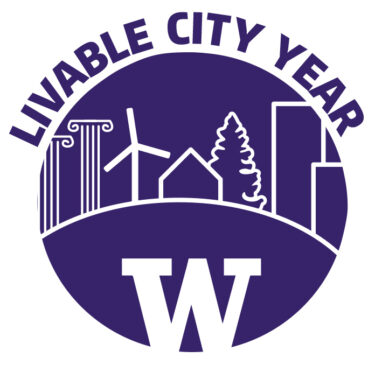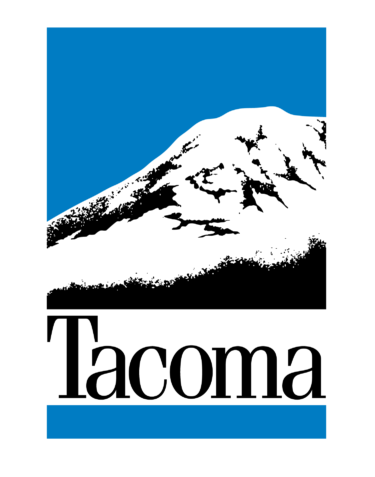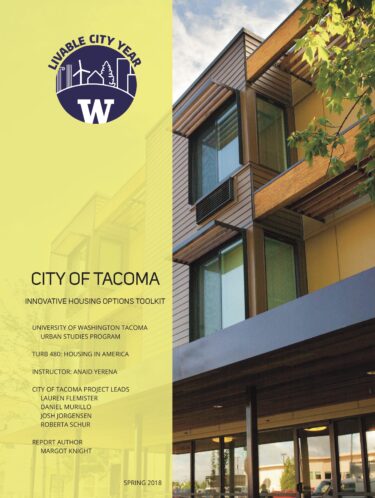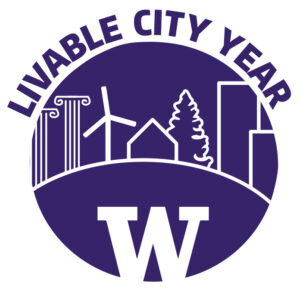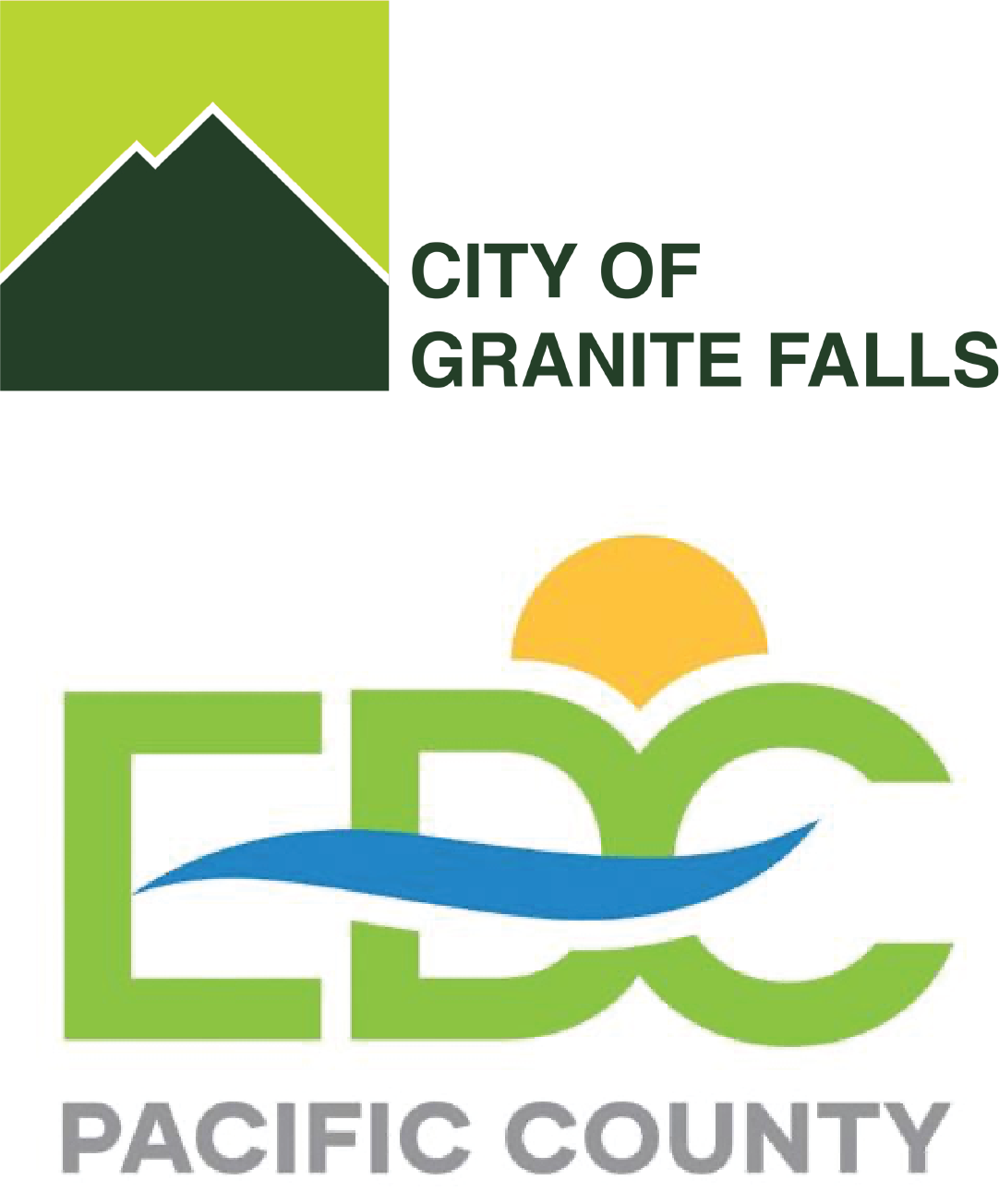Innovative Housing Options Toolkit
Livable City Year 2017-2018 – City of Tacoma
UW Faculty: Anaid Yerena, Urban Studies Program, UW Tacoma
City Project Leads: Lauren Flemister, Planning and Development Services; Daniel Murillo, City of Tacoma Housing Division; Josh Jorgensen, Community and Economic Development; Roberta Schur, Tacoma Housing Authority
Project summary
In 2018, the competitive housing market of the Puget Sound region, marked by unprecedented growth and rapidly increasing land values, disproportionately impacts low-income people. Tacoma’s trending growth pattern has produced greater demand for housing, which increases the cost to purchase and develop land. These added costs lead to a net reduction of affordable housing options — a pattern which particularly impacts low- and middle-income community members who do not own their homes. In fact, approximately half of Tacoma’s residents are renters, made increasingly vulnerable to displacement as their rents continue to rise. The shortage of affordable housing in Tacoma is the precise motivation for this Livable City Year project dedicated to housing options.
The desired outcome for this project is to offer the City of Tacoma an innovative housing options toolkit, with recommendations based on students’ examination of case studies related to affordable housing strategies and their analysis of existing barriers to local implementation of such methodologies. As part of the scope of work for this project, students from the University of Washington Tacoma (UWT) focused their research on five specific innovative housing options and evaluated their potential for providing affordable housing units in Tacoma. Partners from the Tacoma Housing Authority and the City of Tacoma had previously identified five innovative housing options, central to this report: community land trusts, community development corporations, land banks, tiny home development, and modular housing construction.
INNOVATING HOUSING OPTIONS: TERMS AND DEFINITIONS
Each innovative housing option facilitates the development of affordable housing in a distinct way. Together, the five options offer the City of Tacoma a toolkit utilize to ensure provision of enough affordable housing to serve Tacoma’s low- and middle-income community members.
- Community land trusts offer below market-rate housing opportunities by maintaining ownership of the land while allowing incremental gains on ownership of the housing unit during the tenure of the holding.
- Community development corporations help stabilize neighborhoods and counteract displacement of legacy residents by developing affordable housing.
- Land banks purchase blighted or vacant properties and designate them as land for affordable housing.
- Tiny homes are small, independent, residential structures. They range from 100-400 square feet in total area. The reduced amount of land and materials required to create tiny homes is central to their affordability.
- Modular construction streamlines the construction process by assembling housing units within a factory; this reduces labor costs.
Methods
Each research team reviewed a minimum of 45 literature sources prior to drafting recommendations for the City of Tacoma. In addition, each team worked with a community partner who provided guidance throughout the quarter. Some teams conducted interviews, analyzed existing municipal codes, and/or read community development plans to gain further insights. Other teams met with local organizations in the eld and observed the work of implementing innovative housing approaches.
Case Studies
During their research phase, students reviewed case studies relevant
to their assigned housing option. This helped them to identify potential advantages and barriers to each affordable housing approach. They used their preliminary findings to form the recommendations of this report.
Recommendations
Students identified a number of barriers could impede the introduction of innovative housing approaches in Tacoma. These include insufficient affordable housing policies, the rising costs associated with purchasing and developing land, an increasingly competitive housing market, high transportation costs, and a lack of applicable language regarding regulatory codes and zoning policies. To combat displacement of low- and middle-income people and increase the availability and variability of affordable housing in Tacoma, the City may find it necessary to update policies and processes to allow for more compact, inclusive, and sustainable housing practices.
Part of the 2017-2018 Livable City Year partnership between the University of Washington and the City of Tacoma.
See all Livable City Year projects in Tacoma that UW students and faculty worked on during the year-long partnership.
